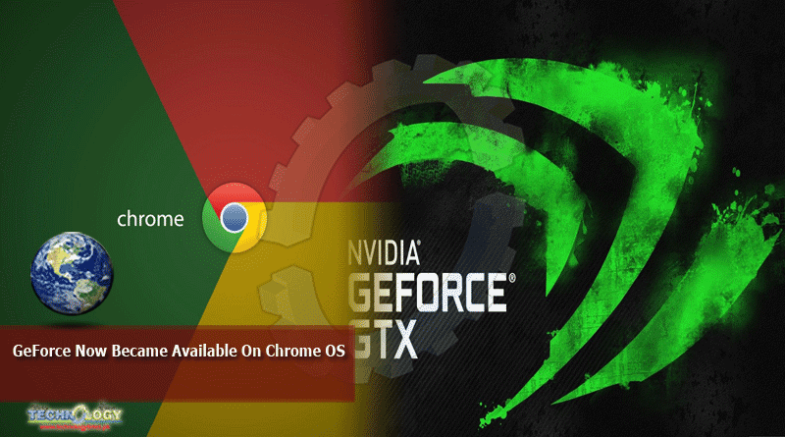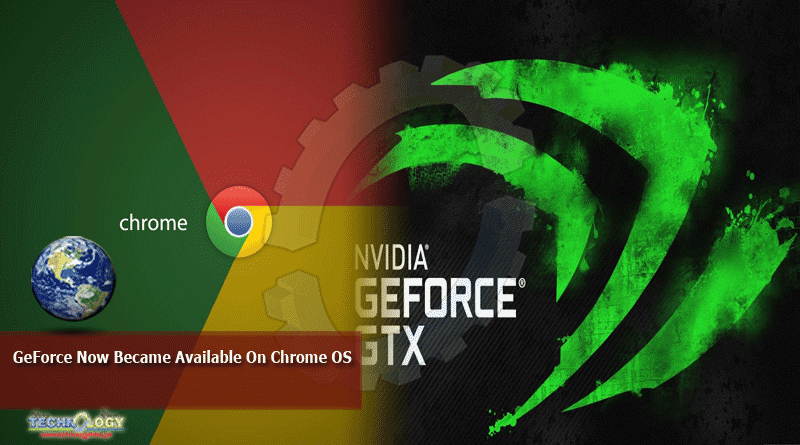When GeForce Now Became Available On Chrome OS Just Over A Week Ago, I Honestly Thought It Was As Simple As NVIDIA Deciding To Launch A Web-Based Player

Similar to Stadia’s version of the same thing. After all, Stadia’s been at it for a solid 9 months at this point, so NVIDIA likely learned a thing or two about pushing game streaming services through web-based technologies from Stadia’s ups and downs. Never mind the fact that much of the plumbing needed to make low-latency game streaming possible on the web is done in Chrome via open source standards for the Chromium projects. All that work isn’t just for Stadia and can be easily leveraged by others like NVIDIA when needed.
Chrome OS, Stadia’s web player isn’t without faults and to test that assertion, I launched into PUBG right before writing this article and still have tons of odd mouse movement jitter and a recurring issue where holding the ‘W’ key to move forward simply stops working. When running from the dangerous, oncoming blue, it’s really a bummer when your character just stops all of the sudden. Don’t get me wrong, the web portal for Stadia is still wildly impressive, but it isn’t without flaw.
When NVIDIA announced their take on their own web-based player, I simply thought they’d base it in Chrome and make it available wherever Chrome lives. While not necessary for the big two desktop platforms (Windows and MacOS have dedicated GeForce NOW apps, after all), I honestly thought the Chrome browser would be the primary factor involved in making GeForce NOW a reality on the web.
Chrome OS, What I didn’t realize at the onset of the service is the fact that NVIDIA chose to launch the GeForce NOW web experience for Chromebooks. Period. This isn’t a Chrome-specific ability. Instead, this is a Chrome OS-specific ability. And, honestly, that was exciting for us to learn. You have to understand that as a Chromebook user and unabashed Chrome OS fan/nerd, I constantly – CONSTANTLY – deal with platform limitations when it comes to app support. Believe it or not, many popular applications have either useless Android versions or don’t bother with web apps of any sort (please sense my sarcasm, here). Though they could easily leverage either platform, they simply don’t, and that means Chromebook users are left out in the cold for a lot of things.
I’m used to this reality by now and many other users are as well, but I can’t lie: when a big company chooses to target Chromebook users as a primary audience and makes a product for Chrome OS and for Chrome OS alone, I get a little giddy inside. We Chromebook users don’t get a ton of stuff that is just for us, and when it happens I still find myself a bit dubious about the whole thing. I honestly had trouble believing NVIDIA launched an entire web experience for GeForce NOW just for Chromebooks when they first announced it, but that is exactly what they have done.
Why it matters
This all becomes important in two big ways. On one hand, we now have a web-based game streaming experience that is flat-out fantastic on Chromebooks. While I’ve played Stadia here and there on the web when I don’t have a TV/Chromecast handy, I’m drawn to GeForce NOW on the web as a stable, usable, and highly-playable platform for games like Fortnite, APEX Legends, and Hyper Scape. It’s not just a novelty: it is supremely playable and so much fun that I honestly forget I’m streaming games from a server most times. I don’t know this for fact, but I’d say part of that great experience is the fact that NVIDIA only focused on one version of Chrome for the experience instead of having to figure out all the issues that may arise on Windows and MacOS, too.
Chrome OS, On the other hand, the arguably more-important factor here is that a company the size of NVIDIA sees Chrome OS. Really sees it. While Chromebooks haven’t historically been a legitimate development target, it seems that period may be coming to an end. Instead of being the last group software makers consider, perhaps the recent growth and adoption of Chrome OS is finally starting to make the case that Chromebook users aren’t second-class citizens and are worth considering when building experiences.
Take Adobe Premiere Rush as an example. When the app launched on more-popular operating systems over a year ago, Chromebook support was promised. Over a year later, we still have little proof that the app is actually going to ship any time soon. Why is that? Adobe clearly doesn’t see the benefit in engaging Chromebook users with their services or at least didn’t until recently. With the app showing up at random for some users in the Play Store on Chrome OS, perhaps that is changing, but it doesn’t change the fact that Adobe – like many other software companies – views Chromebooks as a side project and not worth their full attention. Can you imagine Premiere Rush just skipping out on iOS? Exactly.
NVIDIA is a massive company and well aware of the potential of different operating systems. I don’t think many people would have blamed them if they just shelved the whole GeForce on Chromebooks idea. But they didn’t. Instead, it seems they have fully leaned in and made something quite special, and that says something about the potential and benefit NVIDIA sees in the Chromebook user community. As we’ve said for years, the population of Chromebook users is growing rapidly and those that see this and begin taking advantage of it will reap the benefits of a user base that is thirsty for great software for their hardware.
The ramifications of this could be quite large, honestly. If app developers who build web apps, Android apps, or Linux apps begin seeing larger companies like NVIDIA taking Chrome OS very seriously and having success, there’s a big chance that they will begin to follow suit. I’ve harped on this before and I’ll say it until I’m blue in the face: Android has the ability to deliver solid desktop apps if developers choose to make it so. Thus far, many have chosen not to and I’d wager they are missing a massive, growing crowd of users that could potentially adopt their app in droves if it was a solid experience on the larger screen of their Chromebook.
The same effect could happen with web apps and Linux apps, too. As developers see the potential that sits in the ever-expanding user base for Chrome OS, perhaps more time, effort, and intentionality will follow. As a long-time Chromebook user, I know that’s exactly what I’m after. I want great app experiences regardless of where that app comes from. I want solid options and apps that do awesome things and simply perform on my Chromebook. Comapanies that see this, develop things like this, and deliver those products to market have a very good chance of earning my loyalty as a user. And I’d guarantee I’m far from the only one who thinks that.
This news was originally published at chromeunboxed.com
